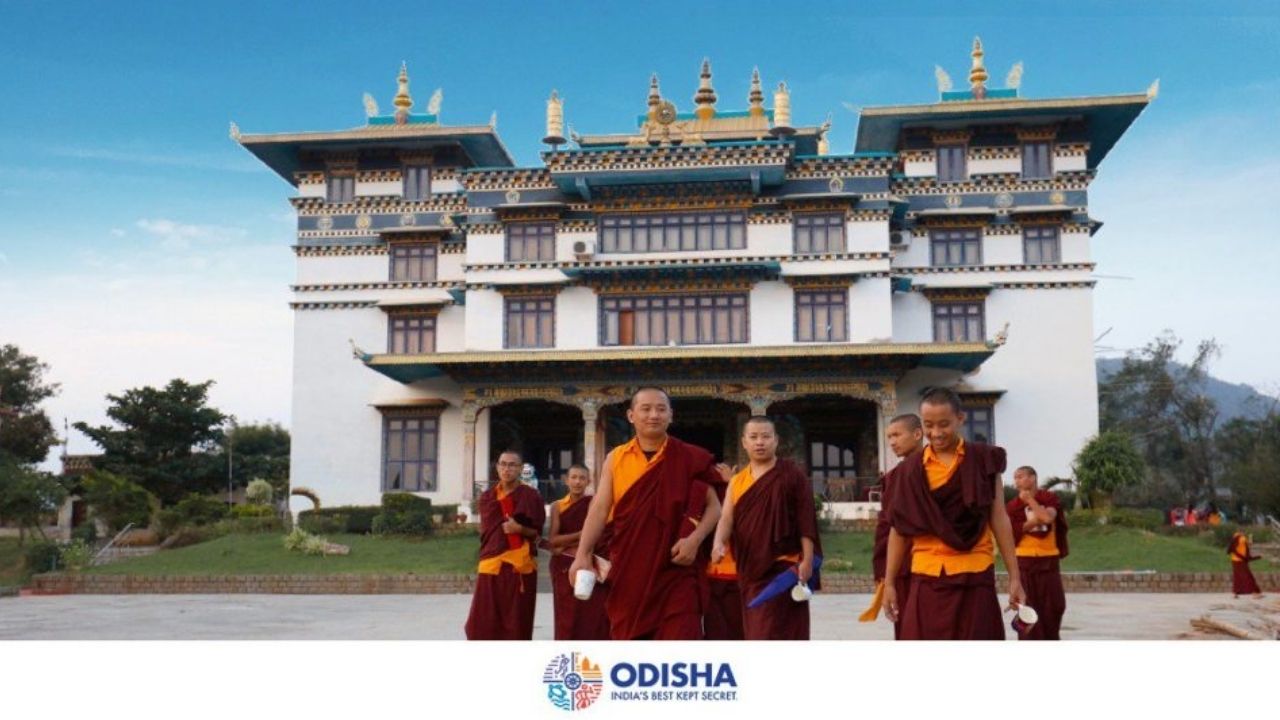In a significant move to elevate its position on the global tourism map, the government of Odisha has announced a major partnership. The state is collaborating with the Indian Institute of Technology (IIT) Bhubaneswar and the Jajpur-based Kalinga Buddhist Foundation to develop and promote its rich Buddhist heritage. This initiative aims to transform Odisha’s ancient sites, often overshadowed by the state’s more popular temples, into key international attractions.

Odisha Enters Major Partnership
| Key Fact | Detail/Statistic | Source |
| Partnership Focus | Integrated development of Buddhist heritage sites in Odisha. | Government of Odisha, Department of Tourism |
| Key Locations | Ratnagiri, Lalitgiri, Udayagiri, and other sites in Jajpur district. | IIT Bhubaneswar, Kalinga Buddhist Foundation |
| Goal | Attract a global audience, particularly from East and Southeast Asia, by blending heritage with modern technology. | Odisha Tourism Development Corporation (OTDC) |
A Comprehensive Plan for Buddhist Heritage
The collaboration is a multi-faceted approach focusing on heritage conservation, infrastructure development, and digital innovation. According to a statement from the Department of Tourism, Government of Odisha, the partnership will leverage the technical and academic expertise of IIT Bhubaneswar to create a master plan for the integrated development of the Buddhist circuit. This includes the renowned “Diamond Triangle” of Ratnagiri, Lalitgiri, and Udayagiri, located in the Jajpur district.
Dr. Rakesh Singh, a professor of architecture at IIT Bhubaneswar and a lead researcher on the project, explained the institute’s role. “Our focus is not just on preserving the physical structures, but also on creating an immersive experience for visitors,” he said in a recent press briefing. “This involves everything from using advanced surveying techniques to designing visitor centers and incorporating digital exhibits that tell the story of these sites in a compelling way.”
The Kalinga Buddhist Foundation brings deep historical and cultural knowledge to the project. Its chairman, Dr. Manas Ranjan Hota, emphasized the need to promote awareness. “Odisha’s role in the spread of Buddhism across Asia is often underestimated,” Dr. Hota stated. “We want to highlight that history and make these sites accessible to pilgrims and tourists from countries like Japan, Thailand, Sri Lanka, and China, where Buddhism is a major religion.”

The Historical Significance of Odisha’s Buddhist Sites
The state of Odisha, known as ancient Kalinga, has a profound connection to Buddhism that predates the more famous sites in northern India. After the devastating Kalinga War in the 3rd century BCE, Emperor Ashoka is said to have embraced Buddhism and spearheaded its propagation. Archaeological excavations across Odisha have unearthed numerous monasteries, stupas, and rock edicts, confirming the region’s status as a major center of Buddhist learning and art.
The sites of Ratnagiri, Lalitgiri, and Udayagiri are particularly significant. Ratnagiri, often described as a “university of Buddhist learning,” flourished from the 5th to the 13th centuries CE and was a key center for Vajrayana Buddhism. Lalitgiri contains some of the oldest Buddhist remains in the region, while Udayagiri boasts an impressive rock-cut monastery and a massive stupa. These three sites form a triangular circuit that historians believe was a major hub for Buddhist monks, scholars, and pilgrims for centuries.
Modernizing Heritage for the Global Tourist
The partnership will integrate modern technology and sustainable practices into the development plan. Dr. P.K. Nanda, a tourism expert from Utkal University, noted the importance of this approach. “Modern tourists, especially international ones, expect more than just ruins. They want context, comfort, and connectivity,” he said in a phone interview. The collaboration with IIT Bhubaneswar is expected to address these needs by incorporating features such as:
- Digital Heritage Trails: Using QR codes and augmented reality apps to provide interactive information about each site.
- Infrastructure Upgrades: Developing a comprehensive plan for improved roads, signage, and visitor amenities.
- Eco-Tourism: Implementing sustainable practices to minimize the environmental impact of increased foot traffic.
The initiative is also expected to create new economic opportunities for local communities. The government plans to train local guides, artisans, and hospitality workers to ensure the benefits of the tourism boom are distributed equitably.
Broader Implications for India’s Tourism Strategy
This strategic partnership is part of a larger national trend where states are leveraging their unique cultural and historical assets to attract tourists. India’s Ministry of Tourism has been encouraging such public-private collaborations to diversify the country’s tourism offerings beyond the traditional “Golden Triangle” of Delhi, Agra, and Jaipur.
Odisha’s focus on its Buddhist heritage is particularly noteworthy given the massive international pilgrim and tourist market from Asia. Sunil Kumar, a travel industry analyst based in New Delhi, commented, “This is a smart play. The global Buddhist population is over 500 million. By focusing on this niche, Odisha is not just competing with other Indian states; it’s competing for a share of a very large and dedicated global market.”
Rs 3.24 Crore in Unsettled Leases: Odisha Tourism Faces Major Audit Scandal
Odisha’s B-MAAN Scheme Soars as Bhubaneswar-Jharsuguda Flight Takes Off for the First Time
Cruise India Mission Launches Bold Plan: 4 Breathtaking River Routes Coming to Odisha
The project faces challenges, including the need for continuous funding, effective marketing, and the preservation of fragile ancient structures. However, officials are confident that the collaborative model provides the necessary expertise and resources to overcome these obstacles.
The collaboration between the Odisha government, IIT Bhubaneswar, and the Kalinga Buddhist Foundation represents a modern approach to heritage management. By combining academic rigor, cultural expertise, and technological innovation, the initiative seeks to not only protect Odisha’s ancient past but also create a sustainable and prosperous future for its tourism sector. The project is expected to serve as a model for other states looking to unlock the potential of their lesser-known historical treasures.





